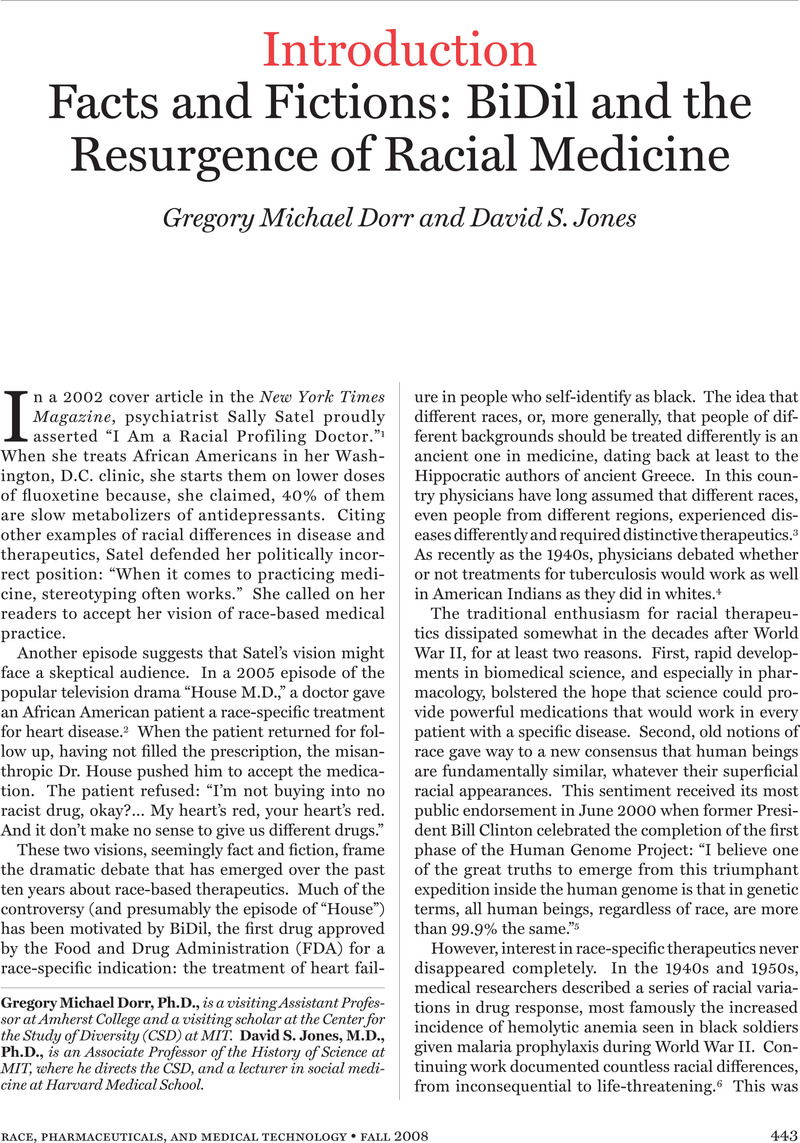Crossref Citations
This article has been cited by the following publications. This list is generated based on data provided by Crossref.
Rusert, Britt M.
and
Royal, Charmaine D. M.
2011.
Grassroots Marketing in a Global Era: More Lessons from BiDil.
Journal of Law, Medicine & Ethics,
Vol. 39,
Issue. 1,
p.
79.
Watts, Allison D.
and
Hamilton, Robert D.
2011.
Scientific foundation, organization structure, and performance of biotechnology and pharmaceutical firms.
The Journal of High Technology Management Research,
Vol. 22,
Issue. 2,
p.
81.
Pollock, Anne
and
Jones, David S.
2015.
Coronary artery disease and the contours of pharmaceuticalization.
Social Science & Medicine,
Vol. 131,
Issue. ,
p.
221.
Byrd, W. Carson
and
Hughey, Matthew W.
2015.
Biological Determinism and Racial Essentialism.
The ANNALS of the American Academy of Political and Social Science,
Vol. 661,
Issue. 1,
p.
8.
Mulinari, Shai
Vilhelmsson, Andreas
Ozieranski, Piotr
and
Bredström, Anna
2021.
Is there evidence for the racialization of pharmaceutical regulation? Systematic comparison of new drugs approved over five years in the USA and the EU.
Social Science & Medicine,
Vol. 280,
Issue. ,
p.
114049.
Grossi, Élodie
2022.
Interroger la racialisation stratégique : sur la race biologique dans les sciences psychiatriques aux États-Unis.
Mouvements,
Vol. HS n° 2,
Issue. HS,
p.
39.
van Wichelen, Sonja
and
de Leeuw, Marc
2024.
Biolegality.
p.
161.



